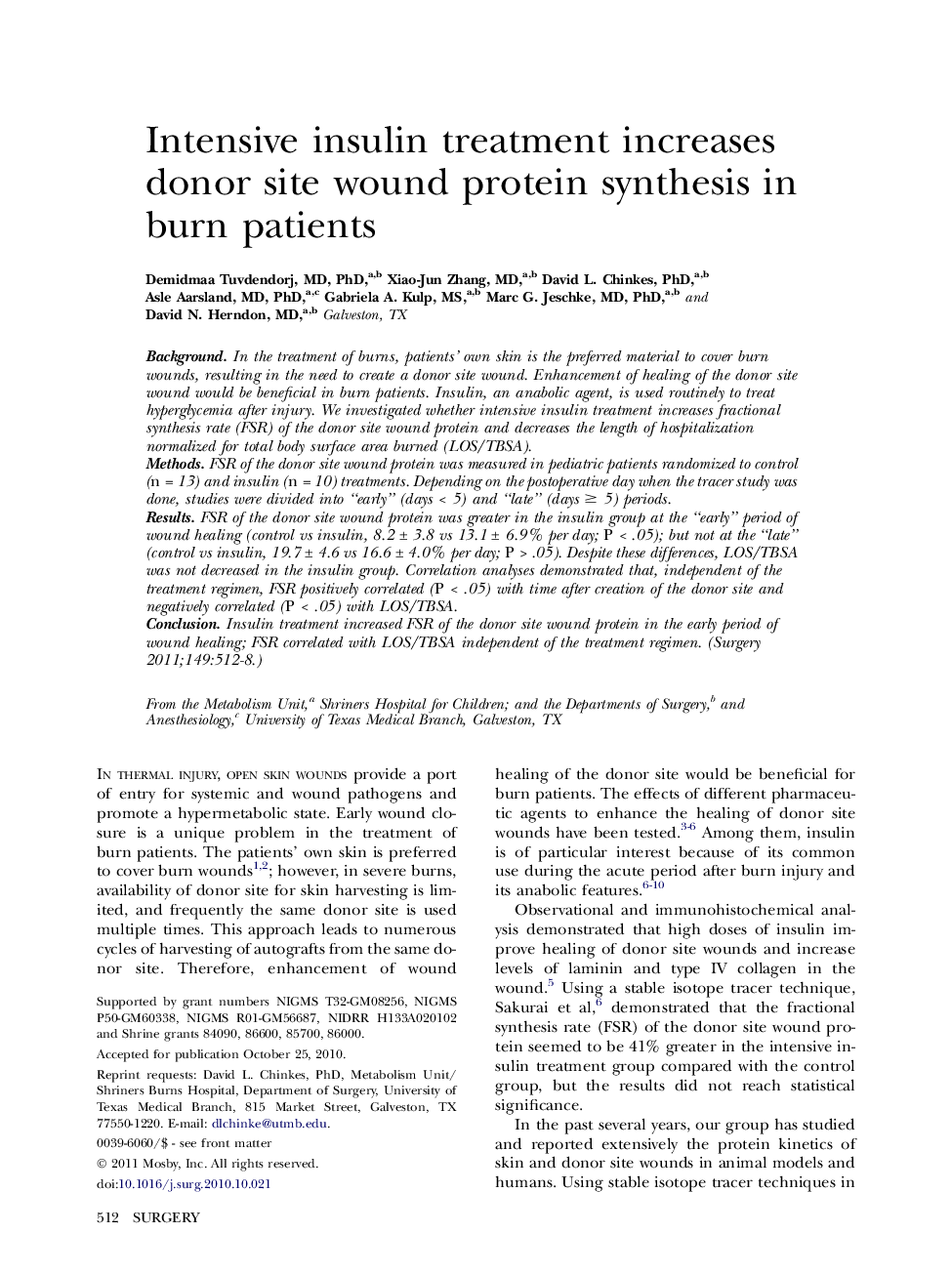| Article ID | Journal | Published Year | Pages | File Type |
|---|---|---|---|---|
| 4308886 | Surgery | 2011 | 7 Pages |
BackgroundIn the treatment of burns, patients’ own skin is the preferred material to cover burn wounds, resulting in the need to create a donor site wound. Enhancement of healing of the donor site wound would be beneficial in burn patients. Insulin, an anabolic agent, is used routinely to treat hyperglycemia after injury. We investigated whether intensive insulin treatment increases fractional synthesis rate (FSR) of the donor site wound protein and decreases the length of hospitalization normalized for total body surface area burned (LOS/TBSA).MethodsFSR of the donor site wound protein was measured in pediatric patients randomized to control (n = 13) and insulin (n = 10) treatments. Depending on the postoperative day when the tracer study was done, studies were divided into “early” (days < 5) and “late” (days ≥ 5) periods.ResultsFSR of the donor site wound protein was greater in the insulin group at the “early” period of wound healing (control vs insulin, 8.2 ± 3.8 vs 13.1 ± 6.9% per day; P < .05); but not at the “late” (control vs insulin, 19.7 ± 4.6 vs 16.6 ± 4.0% per day; P > .05). Despite these differences, LOS/TBSA was not decreased in the insulin group. Correlation analyses demonstrated that, independent of the treatment regimen, FSR positively correlated (P < .05) with time after creation of the donor site and negatively correlated (P < .05) with LOS/TBSA.ConclusionInsulin treatment increased FSR of the donor site wound protein in the early period of wound healing; FSR correlated with LOS/TBSA independent of the treatment regimen.
